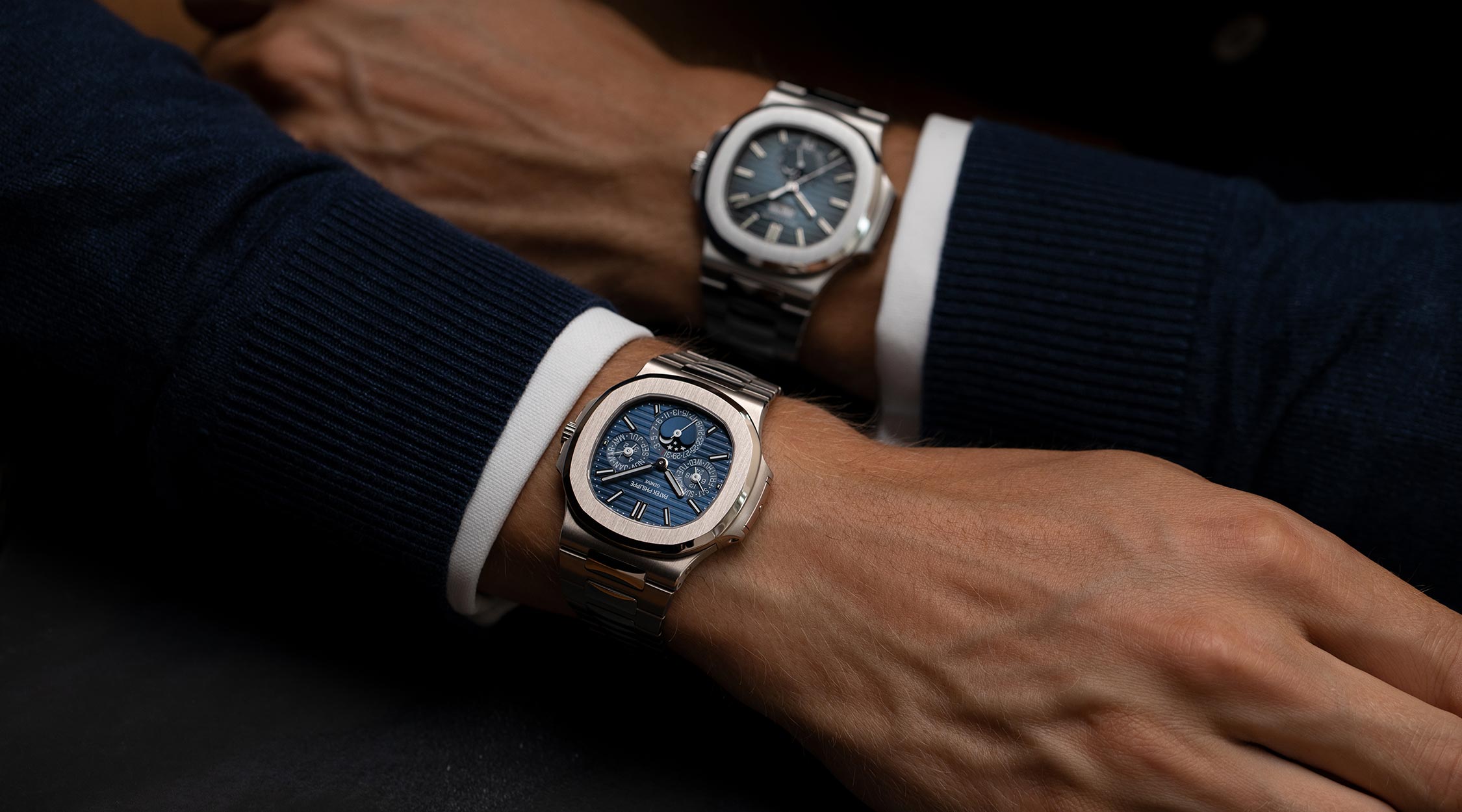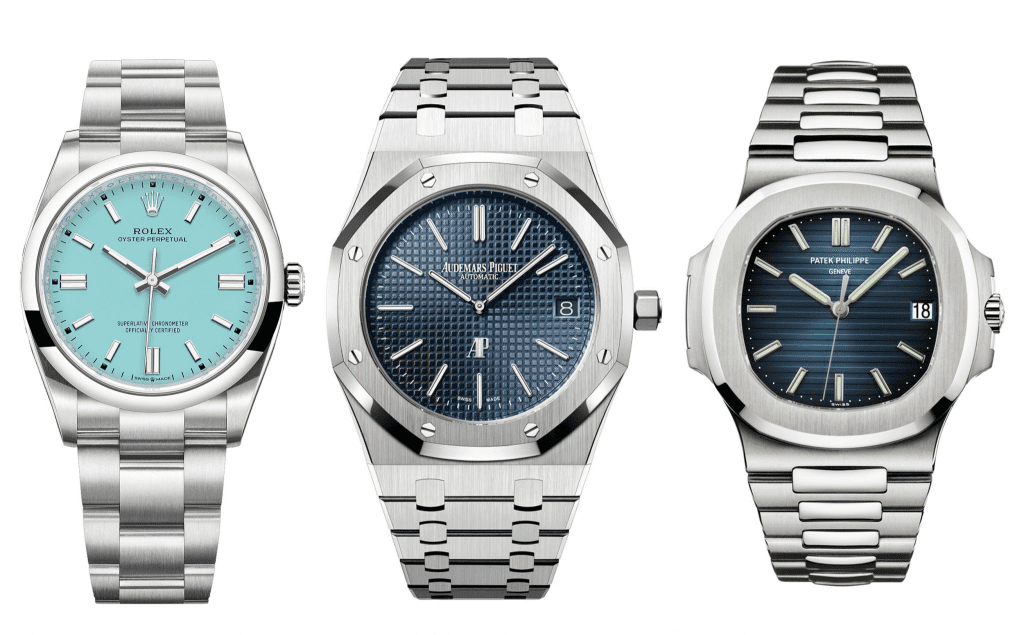In the rarefied world of haute horlogerie, three names command unparalleled reverence among collectors and connoisseurs. Furthermore, these legendary Swiss manufactures—Patek Philippe, Rolex, and Audemars Piguet—represent the absolute pinnacle of watchmaking excellence. While traditionalists often refer to Patek Philippe, Audemars Piguet, and Vacheron Constantin as the “Holy Trinity,” modern collectors increasingly recognize Rolex’s undeniable influence in reshaping luxury watch culture.
Consequently, this comprehensive analysis examines these three titans through the lens of craftsmanship, innovation, investment potential, and market dynamics in 2025. Whether you’re a seasoned collector or aspiring enthusiast, understanding these distinctions proves essential for making informed horological investments.
Patek Philippe – Timeless Tradition & Haute Horology
Heritage and Philosophy
Since 1839, Patek Philippe has embodied the philosophy “You never actually own a Patek Philippe. You merely look after it for the next generation.” Moreover, this Geneva-based manufacture continues to operate as an independent family business, ensuring unwavering commitment to traditional craftsmanship. The company’s approach to watchmaking reflects centuries of accumulated expertise, with many complications requiring years to master.

Signature Complications and Craftsmanship
Patek Philippe’s reputation rests on extraordinary mechanical complications, including minute repeaters, perpetual calendars, and celestial displays. Additionally, the manufacture produces all components in-house, from hairsprings to jewels. Their finishing standards remain uncompromising, with even hidden components receiving meticulous hand-decoration.
Key Patek Philippe Highlights:
- Independent family ownership since 1932
- Complete in-house manufacturing capabilities
- Exclusive annual production of approximately 70,000 pieces
- Patek Philippe Seal certification surpassing COSC standards
- Legendary auction records including the $31 million Grandmaster Chime
Iconic Collections
The Calatrava represents pure dress watch elegance, while the Nautilus defines luxury sports watches. Meanwhile, the Aquanaut offers contemporary sophistication, and the complications collection showcases horological mastery. Each collection maintains distinct character while embodying Patek Philippe’s perfectionist ethos.
Rolex – The Crown of Prestige & Everyday Luxury
The Foundation of Modern Luxury
Founded in 1905, Rolex revolutionized wristwatch reliability and precision. Furthermore, the brand pioneered numerous innovations including the first waterproof watch case (Oyster, 1926) and the first self-winding perpetual calendar (Datejust, 1945). Today, Rolex produces approximately 1.05 million watches annually while maintaining exceptional quality standards.

Engineering Excellence and Innovation
Rolex’s approach emphasizes robust engineering and practical innovation. Additionally, their in-house movements feature paramagnetic components, extended power reserves, and exceptional chronometric performance. The brand’s research and development investments ensure continuous technological advancement while maintaining proven reliability.
Rolex’s Distinguished Features:
- Complete vertical integration with proprietary metallurgy
- Superlative Chronometer certification (±2 seconds daily)
- 904L stainless steel superior to industry standard
- Cerachrom ceramic bezels with exceptional durability
- Extensive authorized dealer network ensuring global accessibility
Investment-Grade Collections
The Submariner remains the archetypal dive watch, while the GMT-Master serves global travelers. Similarly, the Daytona commands extraordinary premiums among collectors, and the Day-Date epitomizes presidential prestige. Each model demonstrates Rolex’s ability to create enduring designs with broad appeal.
Audemars Piguet – Bold Innovation & Iconic Royal Oak
Revolutionary Design Philosophy
Established in 1875, Audemars Piguet consistently challenges horological conventions. Most notably, the 1972 Royal Oak revolutionized luxury watchmaking by introducing stainless steel sports watches at precious metal prices. Subsequently, this bold gamble transformed the industry and established new luxury paradigms.

Technical Innovation and Artistry
Audemars Piguet excels in complications like minute repeaters and perpetual calendars. Moreover, their Royal Oak Offshore introduced larger case sizes and bold aesthetics to luxury watchmaking. The manufacture’s commitment to innovation extends beyond mechanics to include advanced materials and unconventional designs.
Contemporary Collections
Beyond the legendary Royal Oak, the Code 11.59 represents contemporary horological architecture. Meanwhile, the Royal Oak Offshore appeals to modern collectors seeking bold statements. Each collection reflects Audemars Piguet’s dedication to pushing boundaries while respecting traditional craftsmanship.
Comparative Analysis: Craftsmanship, Innovation, Investment Value

Manufacturing Philosophy Comparison
| Aspect | Patek Philippe | Rolex | Audemars Piguet |
|---|---|---|---|
| Heritage | 1839, family-owned | 1905, foundation-owned | 1875, family-owned |
| Craftsmanship | Haute horlogerie focus | Engineering excellence | Innovative complications |
| Price Range | $20,000 – $500,000+ | $6,000 – $100,000+ | $18,000 – $300,000+ |
| Iconic Models | Nautilus, Calatrava | Submariner, Daytona | Royal Oak, ROO |
| Investment Potential | Exceptional appreciation | Strong market stability | Selective model growth |
Technical Capabilities
Each manufacturer demonstrates distinct technical strengths. Patek Philippe excels in grand complications requiring years of development. Conversely, Rolex prioritizes robust engineering and everyday reliability. Meanwhile, Audemars Piguet combines traditional complications with contemporary innovation.
Market Positioning Strategy
Patek Philippe maintains exclusivity through limited production and astronomical prices. In contrast, Rolex achieves desirability through controlled distribution and consistent quality. Furthermore, Audemars Piguet balances tradition with bold design statements appealing to younger collectors.
Market Trends in 2025 – Prices, Demand, Collectability
Current Market Dynamics
The luxury watch market experienced significant corrections in 2024-2025, with secondary market prices declining from pandemic peaks. However, demand for exceptional pieces remains strong among high-net-worth individuals. Additionally, younger collectors increasingly drive market preferences toward contemporary designs and independent manufacturers.
Investment Performance Analysis
Recent market data reveals interesting trends across the three brands:
Patek Philippe Investment Outlook:
- Nautilus steel models maintain premium pricing despite market softening
- Complicated timepieces show strongest appreciation potential
- Vintage references continue setting auction records
- Annual production limitations ensure long-term scarcity value
Rolex Market Resilience:
- Sports models remain highly sought after with strong secondary prices
- Daytona “Panda” dial commands significant premiums over retail
- GMT-Master models show consistent appreciation
- Broad collector base provides market stability
Audemars Piguet Collectability Factors:
- Royal Oak steel models maintain collector interest
- Limited editions and special collaborations perform exceptionally
- Code 11.59 collection gaining recognition among enthusiasts
- Celebrity endorsements drive contemporary appeal
2025 Market Predictions
Experts anticipate continued market maturation with emphasis on exceptional examples. Furthermore, younger collectors’ preferences for larger cases and contemporary designs influence manufacturer strategies. Additionally, sustainability concerns and transparency demands reshape luxury consumption patterns.
Collector Takeaways for 2025:
- Focus on exceptional condition and complete documentation
- Consider emerging models with strong design merit
- Prioritize brands with demonstrated long-term stability
- Evaluate personal enjoyment alongside investment potential
- Monitor market trends but avoid speculation-driven purchases
Conclusion – Which Brand is Right for Which Type of Collector
The Connoisseur’s Choice: Patek Philippe
For collectors prioritizing horological artistry and generational heirlooms, Patek Philippe remains unmatched. Moreover, their commitment to traditional craftsmanship and mechanical innovation appeals to serious enthusiasts. However, entry prices and limited availability require significant commitment and patience.
The Pragmatic Collector: Rolex
Rolex serves collectors seeking proven investment performance and everyday wearability. Additionally, their extensive service network and parts availability ensure long-term ownership satisfaction. The brand’s broad appeal and market liquidity make it ideal for first-time luxury watch buyers.
The Design Enthusiast: Audemars Piguet
Audemars Piguet attracts collectors appreciating bold design and contemporary relevance. Furthermore, their willingness to experiment with materials and aesthetics appeals to younger enthusiasts. The Royal Oak’s iconic status ensures lasting collectability despite market fluctuations.
Final Recommendations
Ultimately, the choice between Patek Philippe vs Rolex vs Audemars Piguet depends on personal preferences, budget considerations, and collecting objectives. Serious collectors often acquire pieces from all three manufacturers, recognizing each brand’s unique contributions to horological excellence.
Therefore, consider your lifestyle, aesthetic preferences, and long-term goals when making this significant investment. Whether drawn to Patek Philippe’s traditional elegance, Rolex’s robust reliability, or Audemars Piguet’s innovative design, each represents the pinnacle of Swiss watchmaking achievement.
For the most current market prices and availability, consult authorized dealers and reputable secondary market specialists. Always verify authenticity through professional evaluation before purchasing pre-owned luxury timepieces.
